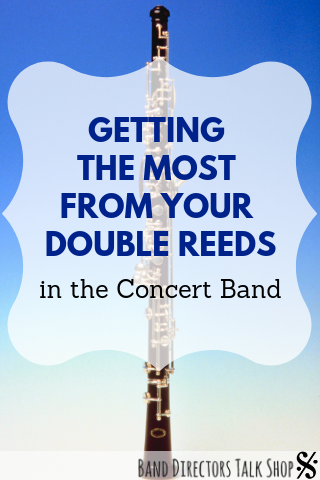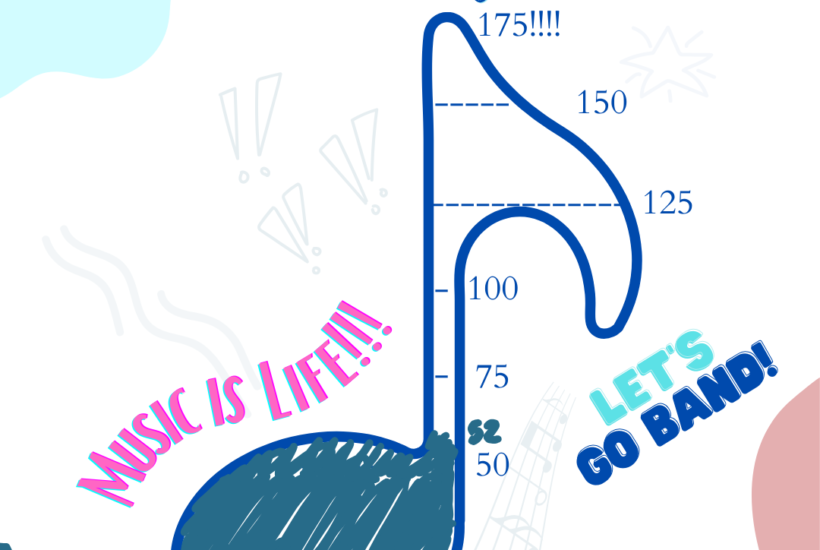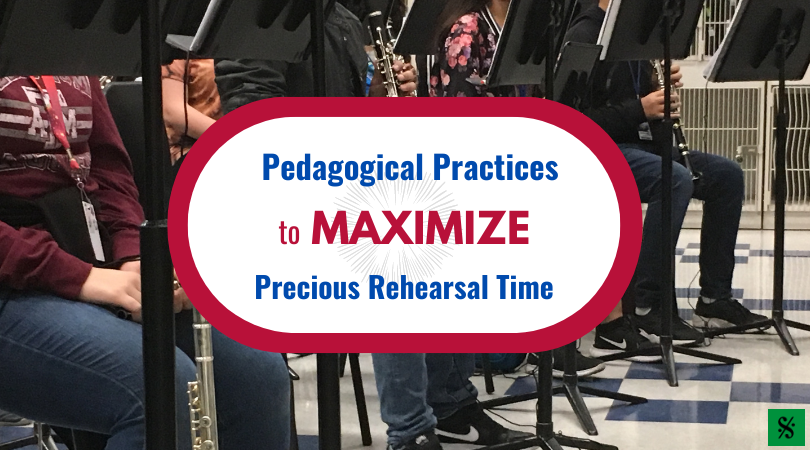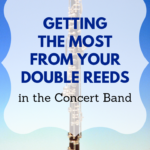Concert bands have a warm, full sound with vast a dynamic range. But fitting the double reed instruments into that sound can present its own unique problems. After a number of years of playing saxophone and clarinet, I switched to the oboe and also learned to double on bassoon. This showed me firsthand the challenge that double reed players face in balancing their sound with the rest of the concert band and how different it is compared to the other woodwind instruments.

There are four major areas to consider when you are working to optimize the contribution of your double reeds:
- Orchestration/Literature: Because double reeds are less likely to be confident at a young age or even part of the band in some smaller programs, publishers of young and developing band literature often require their composers to cue or double all of the double reed parts. While this may make for a safe method of scoring, this approach is often disheartening to the young double reed performer. Any literature that allows for your double reeds to play independent lines or have solo opportunities should be sought out. It may not always be possible to perform it, but when it is, it can be a highly motivating to your double reed players.
- Dynamic Range of the Double Reeds: Compared to the other instruments in the Concert Band, neither the oboe nor the bassoon create a great deal of sound – usually. Because of this, careful consideration should be given to the placement of these instruments. Placing the oboes in the front row between the clarinets and flutes or in the center of the second row is advised. The bassoons can either be behind the front-row oboes or next to them on the second row (near the bass clarinets when possible).
- Balancing and Blending to the Double Reeds: It may seem sensible to merely ask the other wind players to reduce their volume so that the double reed instruments can be heard. A better, more thoughtful strategy is to ask the other wind players to listen for the double reeds and to always be conscience of hearing the color of sound they produce. This should not only automatically lower the volume of the other players, but it should also focus the student’s attention to their own color of sound.
- Quality Reeds: The oboist’s and bassoonist’s reeds seem to be a constant problem. The reed is either too old and weak or may be an inappropriate strength for the player. Students who do not have the luxury of studying privately with a seasoned double reed teacher must rely on the band director to educate them about the quality, care and proper strength of the reed.Students should also be encouraged to rotate their reeds from one day to the next so as not to play one reed until it is useless or completely gives out (which according to Murphy’s Law is bound to happen on the day of a concert!). Instead, a double reed player who is rotating three to four reeds is setting themselves up for success. The young student should also dispose of reeds when appropriate and replenish their supply as necessary.
Students who don’t pay attention to the state of their reed and/or do not rotate their reeds, run the risk of forming unnatural playing habits. Biting or pinching the reed will only weaken the openness of the reed and thus, the resonance of the instrument. Rather, the only way to get a good, full projecting sound is to “play down” into the reed, allowing it to fully vibrate and take the greatest amount of wind possible.Bassoonists also have the added variable of the bocal. Generally, if there are multiple bocals available, one in particular will make the best sound and produce the most consistent tuning. The reeds should then be selected based on the best match with the combination of bocal and instrument in mind. (See this article on maintaining bocals.)
Even if it can only happen periodically, a professional double reed teacher should be brought in to adjust and tune reeds, consult with the band director and to act as mentor to the students.
These suggestions are nothing new and are just something we need to be reminded of. In fact, matters of balance can simply be overlooked: Once when I was playing a transcription of Bernstein’s “Overture to Candide,” guest conductor Dr. William Revelli suggested that I should play the pianissimo oboe solo louder. It was not being heard adequately over the accompaniment. When I politely pointed out the marked dynamic, he said “Oh yes, I forget! You don’t need to play louder, we all need play softer so that you can have a chance to be heard!”
This article is by Richard Rath, a well known as a clinician/soloist throughout the United States. He served as Principal Oboist of the Oklahoma Sinfonia, Arkansas Symphony, Shreveport Symphony, and the South Dakota Symphony. Presently, Richard is Instructor of Oboe and Saxophone at Oral Roberts University, performs on both the oboe and saxophone with the Tulsa Philharmonic, and is Director of Music Ministries at FUMC Claremore. He has served on the faculties of The University of Tulsa, Augustana College, and the University of Arkansas at Little Rock. Richard was on the Founding Committee of the International Double Reed Society and is a frequent performer at their Annual Conventions. He received his B.M.E. and M.M. Degrees from West Texas A&M University, with advanced work at The University of Southern Mississippi. His teachers include Dr. Gary Garner and Dr. William T. Gower. He studied oboe with Mr. John Mack of the Cleveland Orchestra and attended summer sessions with Dr. Eugene Rousseau.
Related Reading:
Do Bassoonists Really Need to Use the Resonance Key?
5 Keeping School Owned Instruments in Top Condition
Demystifying Double Reeds
If you would like to receive our weekly newsletter, sign up here.
Don’t forget to like us on Facebook too!
Learn. Share. Inspire.
BandDirectorsTalkShop.com






Leave a Reply
You must be logged in to post a comment.